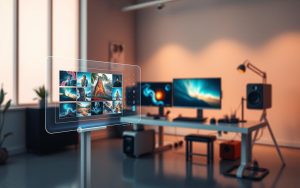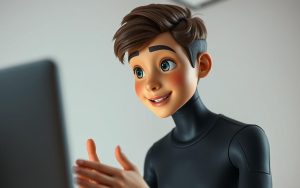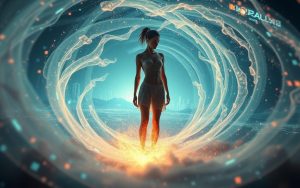Table of Contents
The digital landscape is evolving rapidly, and AI image generation is at the forefront of this change. With technological advancements making high-quality image creation accessible to all, creators, marketers, and everyday users can now produce stunning visuals without extensive design experience.
Our comprehensive guide explores the best image generation tools available at no cost. We’ve rigorously tested and evaluated these tools to bring you the most effective solutions for your visual content needs.
Whether you’re concerned about quality, features, or ease of use, this guide will help you navigate the world of AI-generated images and discover the perfect tool for your projects.
The Evolution of AI Image Generation
The evolution of AI image generation technology has revolutionized the way we create and edit images. Over the years, AI image generation has transformed from primitive algorithms to sophisticated neural networks.
Key advancements include the development of generative adversarial networks (GANs) and diffusion models, which have significantly improved the quality and realism of AI-generated images. The democratization of AI image tools has made it possible for average users to access advanced image generation capabilities.
| Milestone | Description | Impact |
|---|---|---|
| GANs & Diffusion Models | Improved image quality and realism | Enhanced user experience |
| Cloud-based Solutions | Increased accessibility | Broader user base |
| Pixlr’s Evolution | Incorporation of cutting-edge AI | Maintained industry leadership |
Pixlr, a pioneer in photo editing services, has maintained its top position for over 15 years by innovating and incorporating AI capabilities. The competition among tech companies has driven rapid innovation, making advanced image generation tools accessible to all.
Why Free AI Image Generators Are Game-Changers in 2025
In 2025, the rise of free AI image generators is democratizing access to high-quality visual content, allowing anyone to produce professional-quality images without extensive design experience.
These image generators have had a significant economic impact, particularly for small businesses, startups, and independent creators working with limited budgets. By providing a free AI image generator, these entities can now create visual content that was previously unaffordable.
- Reducing the barrier to entry for visual content creation across industries.
- Offering time-saving benefits compared to traditional design methods or hiring professional designers.
- Sparking a creative revolution by enabling non-designers to visualize their ideas instantly.
- Changing workflows in marketing, social media management, education, and personal projects.
The 2025 generation of free AI tools offers capabilities that were previously only available in expensive premium software, further emphasizing their role as game-changers in the industry.
What to Look for in Free AI Image Tools
When selecting free AI image tools, several key factors must be considered to ensure optimal results. The effectiveness of these tools largely depends on their image quality and resolution. High-resolution outputs are crucial for applications where detail is important.
Image Quality and Resolution
The quality of the generated images is paramount. Tools that offer high-resolution outputs are preferable, especially for professional use cases.
User Interface and Ease of Use
A user-friendly interface can significantly impact productivity. Tools with intuitive designs make it easier for new users to get started quickly.
Available Features vs. Premium Limitations
Understanding the features available in free versions versus premium tiers is essential. Some tools may offer robust features for free, while others may limit key functionalities.
| Feature | Free Version | Premium Version |
|---|---|---|
| Image Resolution | Up to 1024×1024 | Up to 4096×4096 |
| Advanced Editing | Limited | Full Access |
| Export Options | JPEG, PNG | JPEG, PNG, TIFF |
Pixlr: The All-in-One Free AI Image Generator
In the landscape of free AI image generators, Pixlr emerges as a comprehensive solution. It offers a wide range of tools that cater to various image editing and creation needs.
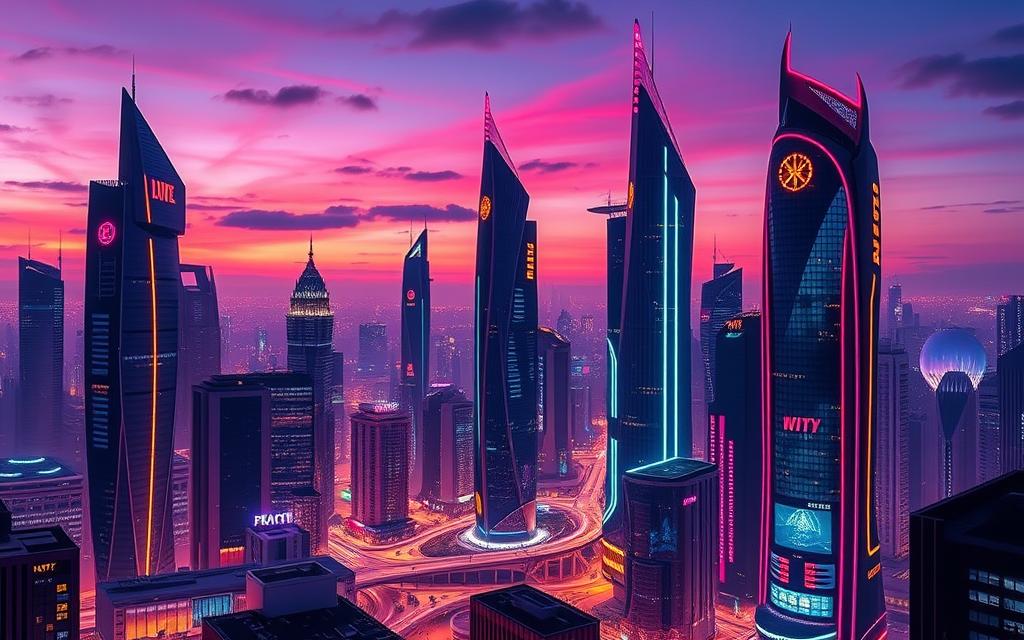
Text-to-Image Generation
Pixlr’s Text-to-Image AI image generator converts simple text into visually captivating artwork. This feature allows users to bring their creative ideas to life with ease.
AI Generative Fill and Expand
The AI Generative Fill feature enables users to quickly realize their creative ideas while maintaining control over their creations. Additionally, the Generative Expand functionality allows users to extend images beyond their original borders without awkward cropping.
Pros and Cons
Pixlr’s photo editing capabilities are robust, offering features like object removal, background removal, and face swap. While the free tier is quite generous, some premium features are reserved for paid subscribers. Overall, Pixlr is a versatile photo editor that balances functionality with ease of use.
By evaluating Pixlr’s performance across different devices and its user interface, it’s clear that this tool is designed to cater to both beginners and experienced designers. With its comprehensive feature set and image manipulation capabilities, Pixlr stands out as a top choice in the realm of free AI image generators.
Fotor: AI Art Creation Made Simple
Fotor simplifies the process of creating stunning AI art, making it accessible to everyone. With its intuitive interface and robust features, Fotor is an ideal choice for both beginners and professionals looking to create high-quality images without extensive technical knowledge.
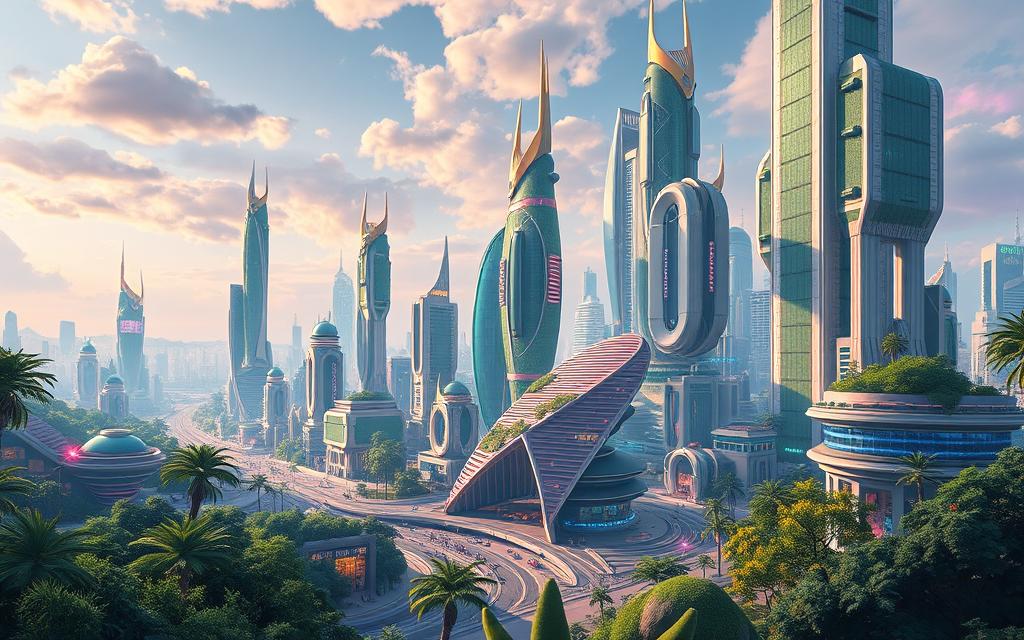
Multiple Art Styles and Customization
Fotor’s AI art generator offers a wide range of styles, including concept art, realistic, cartoon, sketch, oil painting, digital art, and 3D. Users can enter text descriptions, choose their preferred style and aspect ratio, and generate AI images that meet their specific needs.
The platform allows for extensive customization, enabling users to refine their creations with various editing tools and enhancement features. This flexibility makes Fotor a versatile tool for different applications, from social media content to professional art projects.
Mobile App Accessibility
One of Fotor’s standout features is its mobile app, which allows users to create AI images anywhere, anytime. This accessibility is particularly beneficial for those who need to work on the go or prefer the convenience of using their mobile device for creative tasks.
Pros and Cons
Fotor’s Strengths: Simplicity, variety of styles, and mobile accessibility make it an attractive option for users seeking an easy-to-use AI art generator.
Potential Limitations: While Fotor offers a robust free version, some features and higher quality outputs may be reserved for premium users, which could limit the creative possibilities for those on a tight budget.
Best Free AI Background Removal Tools
Free AI background removal tools are changing the game for photographers and designers alike. Background removal is a crucial step in image editing, allowing for the isolation of subjects and the creation of professional-looking compositions.

One-Click Background Removal with Pixlr
Pixlr offers a one-click background remover that utilizes AI to automatically detect and remove backgrounds from images. This feature is particularly useful for those who need to edit multiple images quickly.
The AI technology behind Pixlr’s background remover is sophisticated, handling complex edges and transparent objects with ease.
Remove.bg: A Popular Alternative
Remove.bg is another powerful tool for background removal, known for its simplicity and effectiveness. It provides a straightforward solution for users looking to remove backgrounds without extensive editing experience.
While both Pixlr and Remove.bg offer robust background removal capabilities, they cater to different needs. Pixlr is ideal for those looking for an all-in-one editing solution, whereas Remove.bg specializes in background removal.
Comparison and Use Cases
When choosing between Pixlr and Remove.bg, consider the specific requirements of your project. For product photography, Pixlr’s additional editing features may be beneficial. For simple background removal, Remove.bg might be the better choice.
Both tools offer free versions, but premium features are available for those who need more advanced capabilities.
AI Image Enhancement and Upscaling Tools

The advent of AI in image editing has brought about significant advancements in image enhancement and upscaling. AI image enhancement tools utilize complex algorithms to improve the quality of digital images, differing significantly from traditional editing techniques that often rely on manual adjustments.
Super Scale and Super Sharp Features
Pixlr offers advanced features such as AI Super Scale, which enables users to upscale images while maintaining superb quality. This is particularly useful for increasing the resolution of low-quality images. Additionally, AI Super Sharp enhances image clarity and details, making it ideal for precision in digital photographs.
AI Super Scale works by using neural networks to analyze the image and intelligently fill in missing pixels, thereby increasing the image resolution without compromising on quality. This feature is invaluable for users who need to enlarge images for printing or professional use.
Noise Reduction Capabilities
Another significant feature offered by Pixlr is AI Remove Noise, which effectively reduces or eliminates unwanted noise from images. This results in smoother and cleaner images, enhancing the overall quality.
Noise reduction is crucial for improving the aesthetic appeal of images, especially those taken in low-light conditions or with older devices. By leveraging AI, Pixlr’s noise reduction capabilities ensure that important details are preserved while eliminating distractions.
When to Use Image Enhancement
Image enhancement tools are particularly useful in various scenarios, such as when dealing with low-resolution source material, preparing images for printing, or rescuing poor-quality photos. These tools can also be valuable for working with historical photos, web images, or content created on older devices.
However, it’s essential to understand the limitations of AI enhancement. While these tools can significantly improve image quality, results might not always meet expectations, especially if the source material is severely degraded.
The technical aspects of how neural networks analyze and improve image quality involve complex processes. Essentially, these networks are trained on vast datasets of images, allowing them to learn patterns and features that define high-quality images. By applying this knowledge, AI tools can enhance images by predicting and filling in missing details.
Creative Effects with Free AI Image Editors
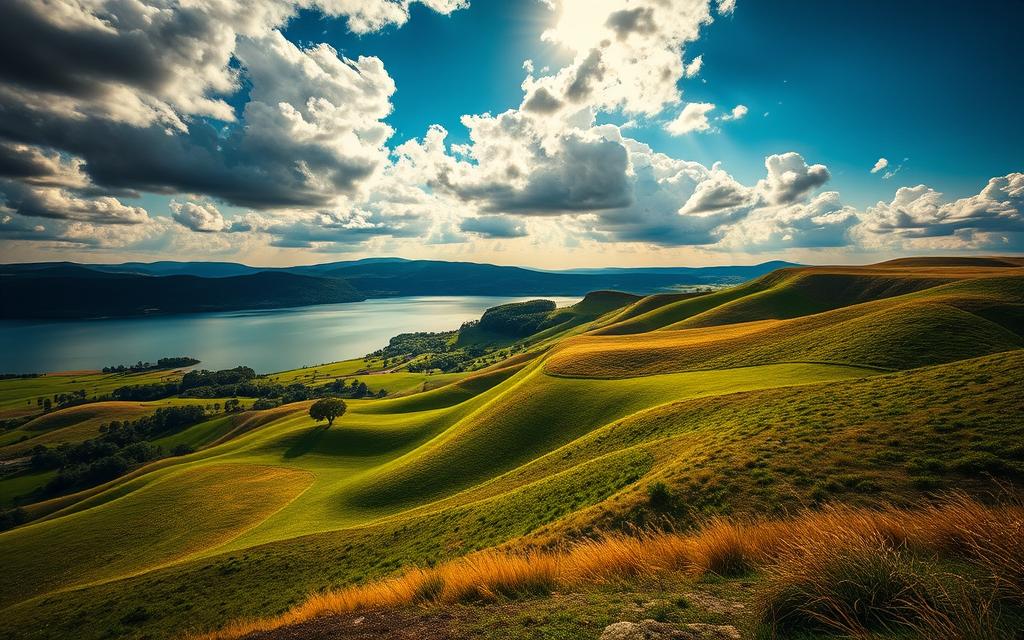
AI-driven image editing tools now offer a wide range of creative effects that were previously unimaginable. These effects are not just limited to simple filters but have evolved into intelligent, context-aware transformations. Free AI image editors like Pixlr offer a variety of photo effects and filters that can enhance images with different styles and moods.
Filters and Artistic Transformations
Filters in AI image editors have become more sophisticated, allowing for artistic transformations that were once the domain of professional designers. These include effects like Dispersion, where selected areas appear to explode into small pieces, and Glitch, which transforms photos into distorted masterpieces.
HDR and Bokeh Effects
HDR effects balance exposure, bringing up dark areas while preserving highlights. Bokeh effects create a professional-looking depth of field with background blur and bokeh lights, adding a touch of professionalism to any photo.
Dispersion and Glitch Effects
Dispersion effects make elements of an image appear to disintegrate into particles, while Glitch effects create intentional digital distortion for artistic or trendy aesthetics. These effects can be used to enhance different types of images, from portraits to landscapes and product photos.
By leveraging AI, these effects appear more natural and integrated with the original image compared to older filter technologies. This makes photo editing more accessible and creative for everyone.
Product Photography with AI Tools
AI is transforming product photography by making professional results accessible without the need for expensive equipment. With tools like Pixlr’s Product Shot Creator, businesses can generate high-quality product images quickly.

Revolutionizing Product Image Creation
Pixlr’s Product Shot Creator uses AI to analyze product shapes and materials, creating appropriate lighting, shadows, and reflections. This results in a professional-grade image without the need for extensive photo editing skills.
Studio-Quality Results Without Equipment
The AI generator can place products in contextual environments or on customizable backgrounds, enhancing the visual appeal. This feature is particularly useful for e-commerce businesses looking to maintain a consistent brand identity across their product lines.
Tips for E-commerce Images
To get the most out of AI image creator tools, ensure your products are well-lit and photographed from multiple angles. Consistency is key to creating effective e-commerce images that drive conversions.
Social Media Content Creation with Free AI Tools
AI tools are streamlining the process of creating captivating social media content. With the rise of free AI image generators, users can now produce high-quality visuals without extensive design experience.
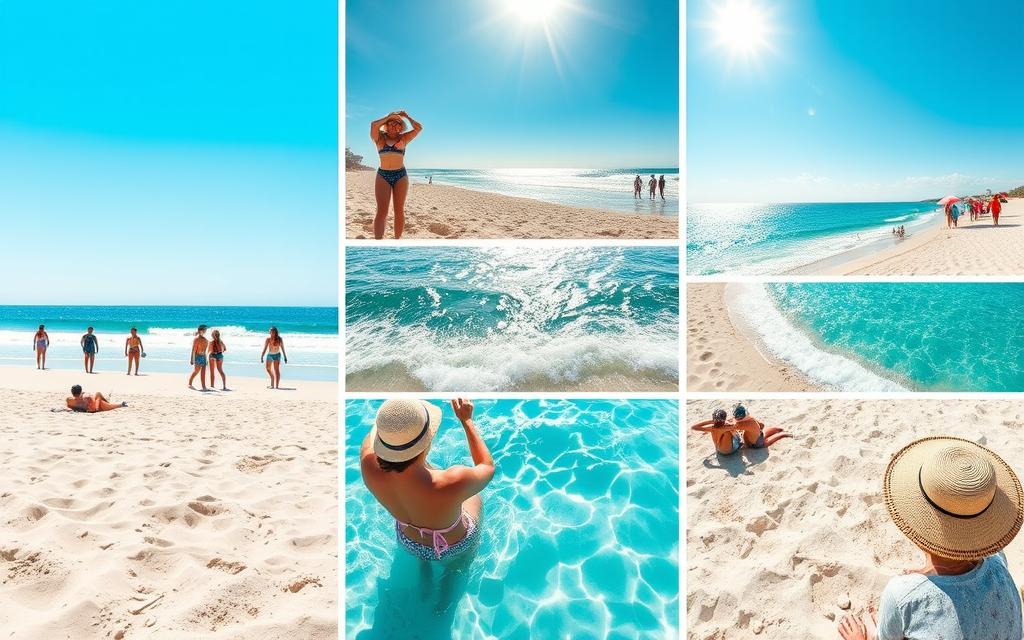
Photo Grid Makers
One of the standout features of AI-powered social media tools is the photo grid maker. Pixlr’s Photo Grid Maker is a prime example, offering a timeless design choice that remains among the favored layouts for presenting photos on social media, advertisements, or in print. The auto grid feature effortlessly offers a range of layouts to suit diverse photo presentation needs.
Aspect Ratio Optimization
Different social media platforms have different requirements for image dimensions. AI tools can automatically adjust images to fit these requirements, ensuring that your content looks professional across all platforms. This aspect ratio optimization is crucial for maintaining visual consistency.
Platform-Specific Templates
AI image generators often come with platform-specific templates designed for Instagram, TikTok, Facebook, LinkedIn, and more. These templates help users create content that is optimized for each platform’s unique features and audience preferences.
By leveraging these AI tools, social media managers and content creators can save time while producing high-quality, engaging visuals. The ability to maintain visual consistency across social media channels is also significantly improved, as AI can suggest color schemes, layouts, and design elements based on brand guidelines or trending styles.
For businesses with limited design resources, these tools provide a competitive edge, enabling them to produce professional-looking content that resonates with their audience.
Mastering Prompts for Better AI-Generated Images
To get the most out of AI image generation tools, mastering the prompt is essential. A well-crafted prompt can make all the difference in achieving the desired outcome for AI-generated images.
Detailed Description Techniques
Detailing your vision with specific descriptions is crucial. This includes specifying the mood, colors, themes, and key elements like art style or poster inspiration. For instance, using text prompts that describe the desired image can significantly enhance the result.
- Specify mood, colors, and themes to guide the AI.
- Use descriptive language to outline key visual elements.
- Mention specific art styles or historical periods for inspiration.
Composition and Style Guidelines
Effective composition is vital for creating visually appealing images. This involves specifying preferences for foreground/background balance, symmetry, or the rule of thirds. By doing so, you can achieve a more balanced and aesthetically pleasing image.
Refining and Experimenting with Prompts
Refining your prompts is an iterative process. If the initial output isn’t as envisioned, adjust and re-prompt. Experimenting with variations in description by altering themes, style, or specific elements can lead to more satisfactory results.
Limitations and Challenges of Free AI Image Tools
Despite the advantages of free AI image tools, there are several challenges that users may encounter. While these tools offer a convenient way to generate high-quality images, they often come with certain limitations.
Watermarks and Export Restrictions
One common issue with free AI image generators is the presence of watermarks on the generated images. These watermarks can be intrusive and may limit the usability of the images for commercial purposes. Additionally, free tools often have export restrictions, such as limited resolution or file format constraints.
Processing Power and Generation Time
Free AI image tools may also be limited by processing power constraints, leading to longer generation times. This can be frustrating for users who need to produce multiple images quickly.
Creative Control Limitations
Furthermore, free AI image tools often offer limited creative control options compared to their premium counterparts. This can restrict the ability to customize images according to specific needs.
| Limitation | Description | Impact |
|---|---|---|
| Watermarks | Visible branding on generated images | Limits commercial use |
| Export Restrictions | Limited resolution or file formats | Affects image quality and usability |
| Processing Power | Longer generation times | Reduces productivity |
To maximize results despite these limitations, users can consider combining multiple free tools or working within the constraints of each tool. Understanding these limitations is key to effectively utilizing free AI image tools.
Ethical Considerations When Using AI Image Generation
As AI image generators become increasingly popular, it’s essential to consider the ethical implications of using these tools. The creation and dissemination of AI-generated images raise several ethical concerns that users must be aware of.
Copyright and Ownership Questions
One of the primary ethical considerations is the issue of copyright and ownership. When using an AI image generator, it’s crucial to understand who owns the generated images. The output of these tools is typically considered to be owned by the user, but the models themselves are trained on vast datasets that may include copyrighted works. This raises concerns about potential copyright infringement and the implications of using AI-generated content commercially.
For more information on the ethical implications of generative AI, visit this resource.
Responsible Use Guidelines
Users of AI image generators must adhere to responsible use guidelines to avoid creating harmful, deceptive, or inappropriate content. This includes:
- Avoiding the creation of deepfakes or other misleading content that could be used to deceive or manipulate individuals.
- Refraining from generating images that promote hate speech, violence, or discrimination.
- Ensuring that AI-generated images are not used in a way that could cause harm or distress to individuals or communities.
Disclosure of AI-Generated Content
Another important ethical consideration is the disclosure of AI-generated content, particularly in professional or commercial contexts. Transparency about the use of AI-generated images is crucial to maintaining trust and credibility with audiences. Failing to disclose AI-generated content could be considered deceptive and potentially harmful.
In conclusion, the ethical use of AI image generators requires a thoughtful and multi-faceted approach. By understanding the copyright and ownership implications, adhering to responsible use guidelines, and being transparent about the use of AI-generated content, users can ensure that these powerful tools are used for the greater good.
Conclusion
As we explore the landscape of AI image generation in 2025, it’s clear that free tools are revolutionizing visual content creation. Throughout this article, we’ve covered the evolution, benefits, and limitations of these tools, highlighting their transformative impact on various creative workflows. Tools like Pixlr and Fotor have emerged as versatile and valuable resources, offering a range of features from text-to-image generation to AI-driven editing capabilities. While free tools come with limitations, their capabilities are impressive, making them accessible to both beginners and professionals. For those looking to explore further, visiting AI image generation resources can provide valuable insights. We encourage experimenting with multiple tools to find the best fit for your needs, and look forward to the continued advancements in AI image generation that will further empower creators.
FAQ
What are the benefits of using free AI image generators?
Using free AI image generators can save time and resources, while also providing access to a wide range of creative options and features, such as text-to-image generation and background removal.
How do I choose the best AI image tool for my needs?
When selecting an AI image tool, consider factors such as image quality, user interface, and available features, as well as any premium limitations or watermarks.
Can I use AI-generated images for commercial purposes?
The use of AI-generated images for commercial purposes raises copyright and ownership questions, so it’s essential to review the terms of service for each tool and consider responsible use guidelines.
What are some common limitations of free AI image tools?
Common limitations include watermarks, export restrictions, and processing power constraints, which can impact the quality and usability of generated images.
How can I optimize my prompts for better AI-generated images?
To optimize your prompts, use detailed description techniques, consider composition and style guidelines, and refine your prompts through experimentation to achieve the desired results.
Are there any ethical considerations when using AI image generation?
Yes, it’s crucial to consider copyright and ownership questions, responsible use guidelines, and the need to disclose AI-generated content to ensure transparency and accountability.
Can AI image tools be used for social media content creation?
Absolutely, AI image tools can be used to create engaging social media content, including photo grids, aspect ratio optimization, and platform-specific templates.
How do AI image enhancement and upscaling tools work?
These tools use advanced algorithms to enhance and upscale images, improving resolution and quality, and can be used for various applications, including product photography and e-commerce images.



